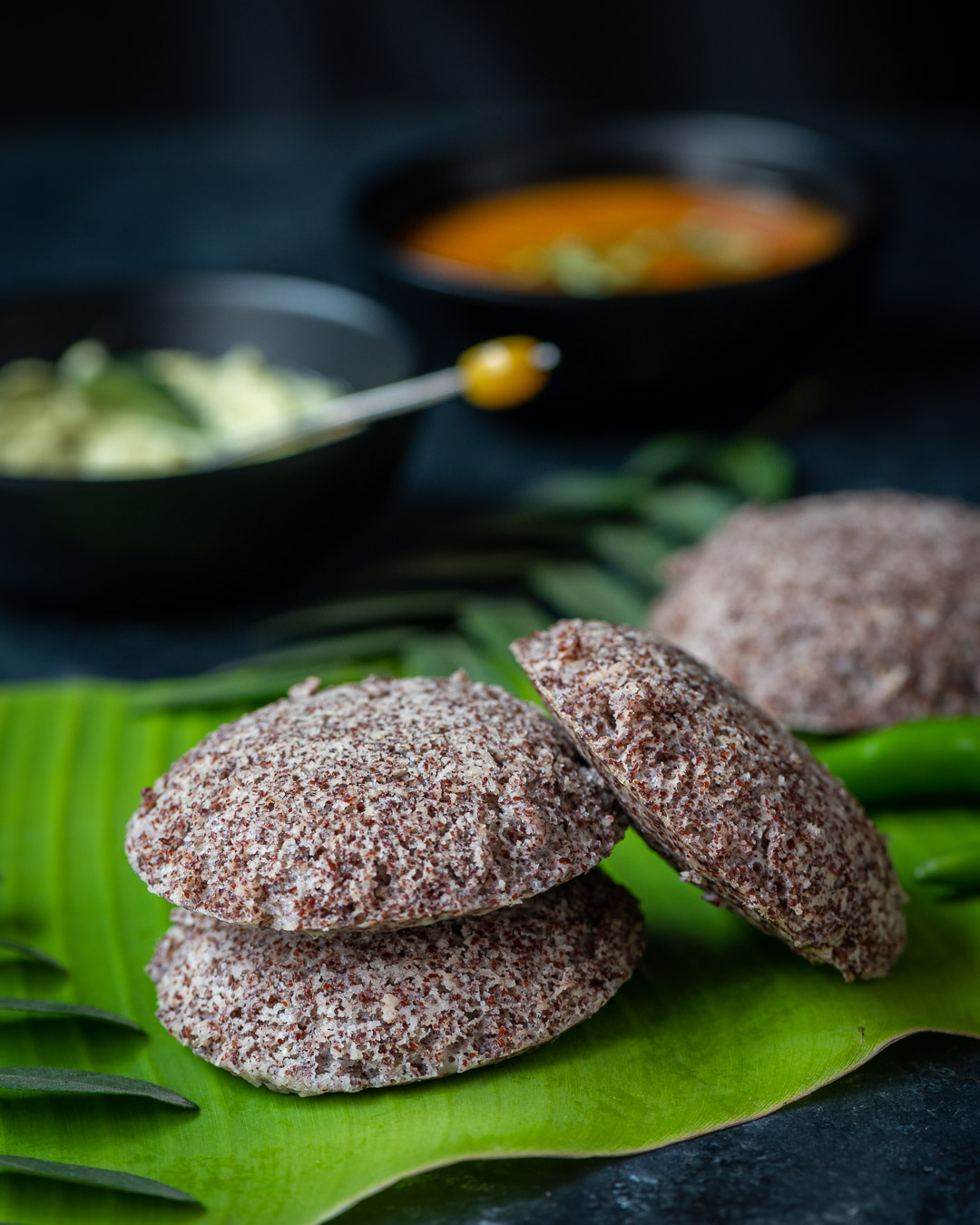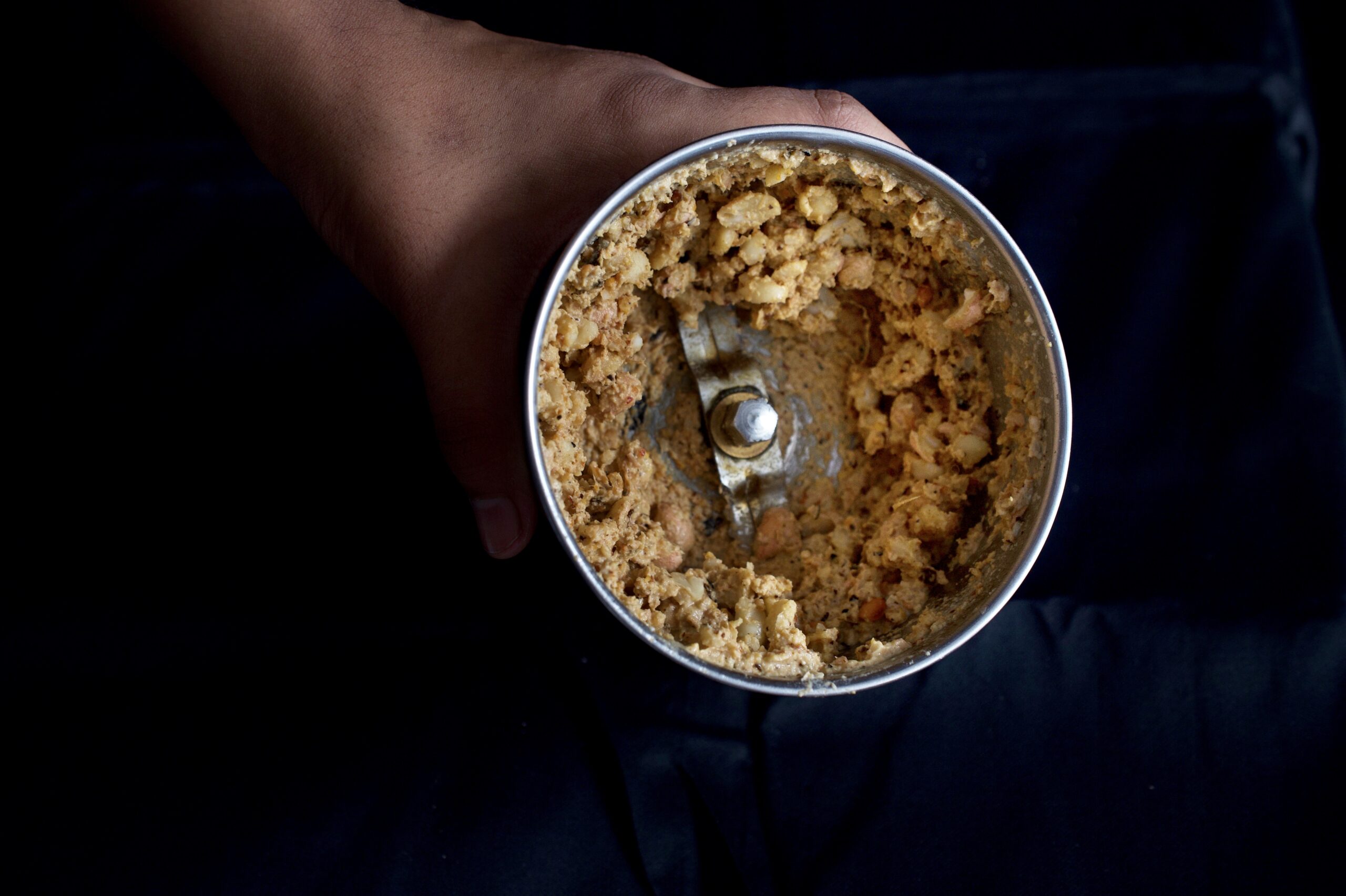We talk about leftovers in all of our homes. How to store them, how to repurpose them and so on. You may have remembered from my Second Helpings series a while back that certain traditional dishes, like rotli na ladoo, are in fact innovations that deliberately use leftovers. This ragi paniyaram recipe is similar in nature. It basically uses up the leftover batter from ragi idly, and becomes a whole new savoury snack of its own.
You would already have learned the recipe for the batter used here, as linked above, so we can head straight into how to make paniyaram. They are amazing: pillowy soft on the inside and crisp on the outside. Dip one in chutney and it’s heavenly. I really feel like ragi paniyarams are bites of paradise!
The recipe below is my go-to. It is very easy to prepare and uses only readily available ingredients. You can add a flavouring of your choice as well. One special way that I like to make it is by dropping half the required batter in the paniyaram mould, adding a dollop of pickle in the centre, and then layering it with more batter. Mango or lemon pickle work perfectly for this, and add a piquant taste when you bite into the paniyaram. That’s the thing about many traditional staples – they are so flexible that you can add whatever you want within your reach. Be innovative, be creative, do you. Enjoy the process and the taste will come on its own.
I would describe paniyarams as being the South Indian version of Gujarati dhoklas, which are a quick fix for sudden guests. All you have to do is add some chopped veggies and seasoning to your regular idly batter and you have everything you need. They are a great snack at tea time and mid-morning, and I would say they are versatile even as dinner or breakfast items.
Ragi Paniyaram
(Yield: Serves 2-4)
1+½ cups ragi batter
1 small onion (finely chopped)
1 green chili (finely chopped)
1 tablespoon coriander leaves
1 teaspoon urad dal
½ teaspoon mustard seeds
¼ teaspoon cumin seeds
2 teaspoons sesame oil +oil for cooking
Pour the ragi batter into a bowl and set aside.
Heat a pan and add the oil. Once it’s hot, add the mustard seeds. When they splutter, add the cumin seeds. Now, add the urad dal and heat until golden. Next, add the onions, green chili, coriander leaves and curry leaves. Sauté for a minute.
Add all of this to the bowl of ragi batter. Mix well.

Prepare and heat the paniyaram plate (I use a seasoned iron grid for the same; you can use non-stick to be safe or if you’re new to the game). Add a few drops of oil to each mound (I like to use ghee for its flavour; since it’s no longer considered one of the evil fats, I’d suggest trying it out, or use either as you prefer). Once heated, add a tablespoon of batter into each mould. Cover, reduce the flame and allow to cook. In a few minutes, with the help of a sharp knife, turn each paniyaram over and allow to cook on the other side until golden.
Remove and serve. There you have it – ragi-rich bites of paradise! Paniyarams are best paired with chutney. I always have grated coconut at home from my trees in the backyard, and make a fresh chutney with it pretty much every day. I sometimes throw in some coriander leaves to make it green. This aside, there is an amazing tomato chutney that I feel works beautifully with ragi paniyarams, and that will be my next recipe on this blog. Stay tuned!















